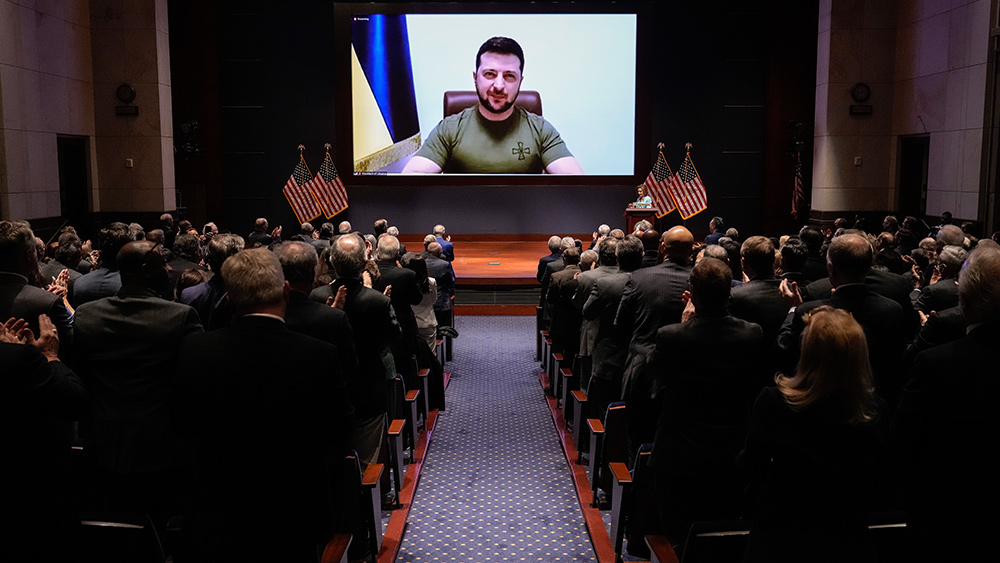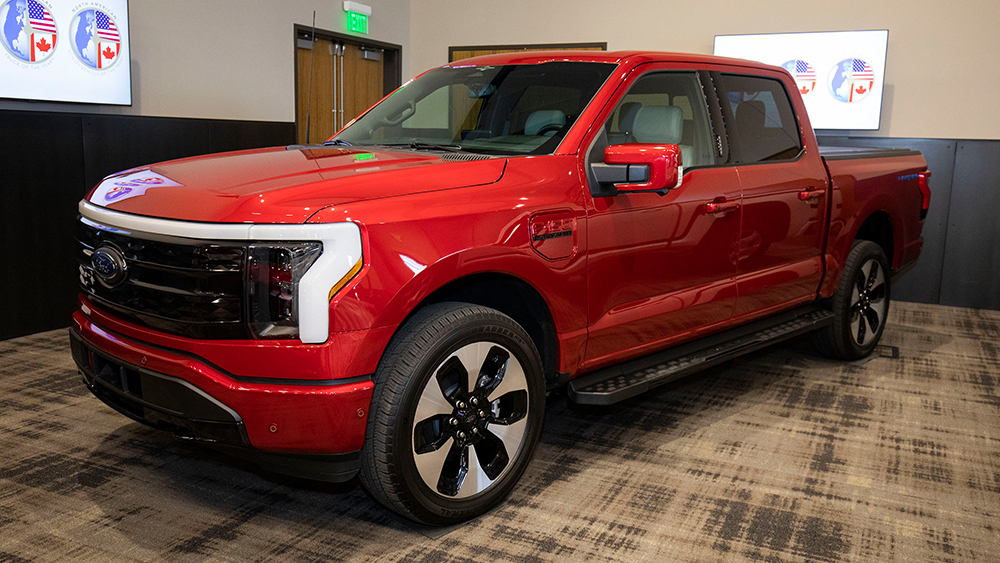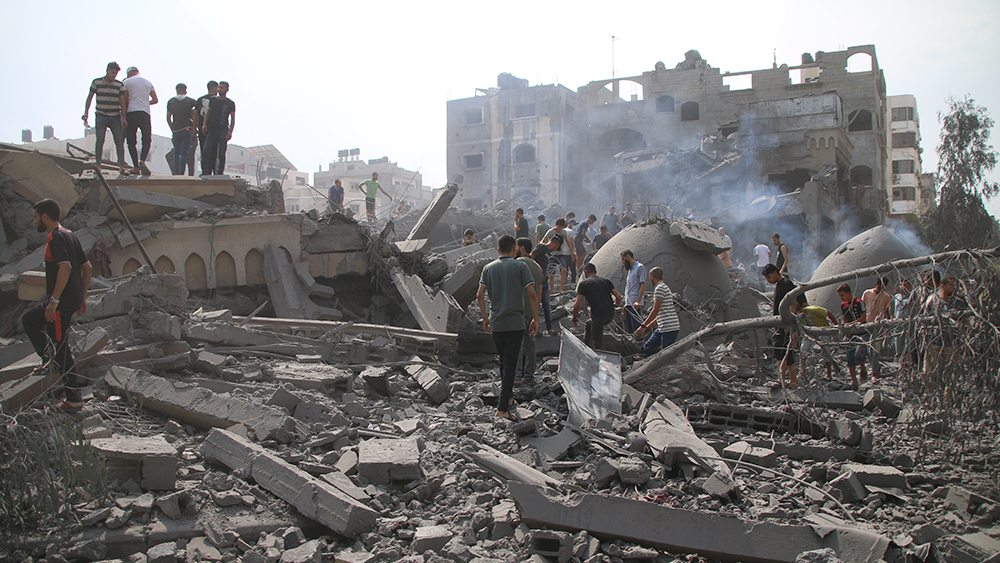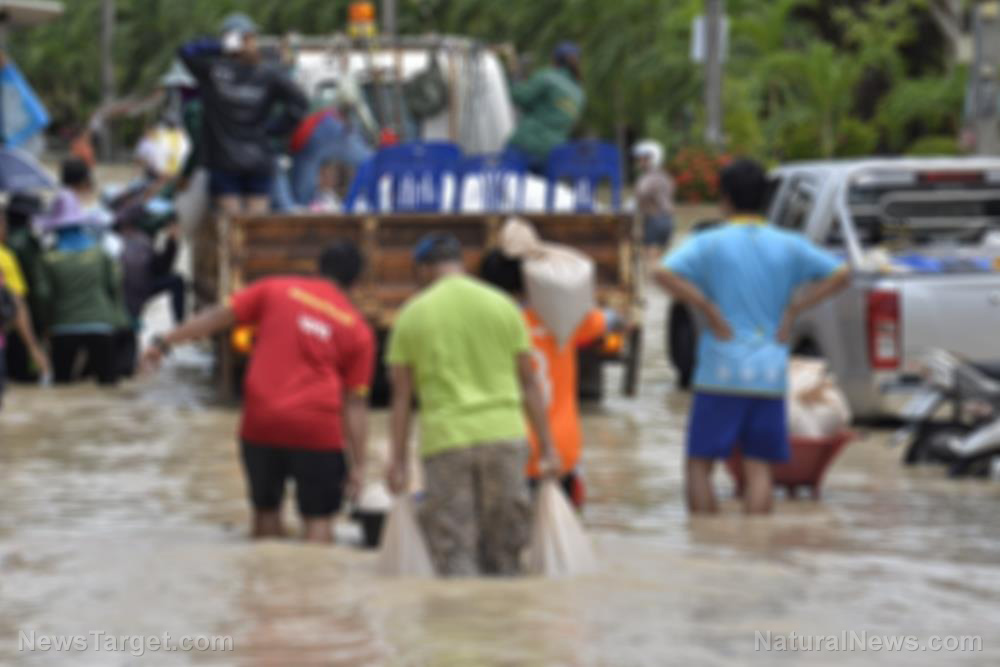Medical preparedness: Supplies to stock up on when preparing for nuclear war
05/15/2023 / By Zoey Sky
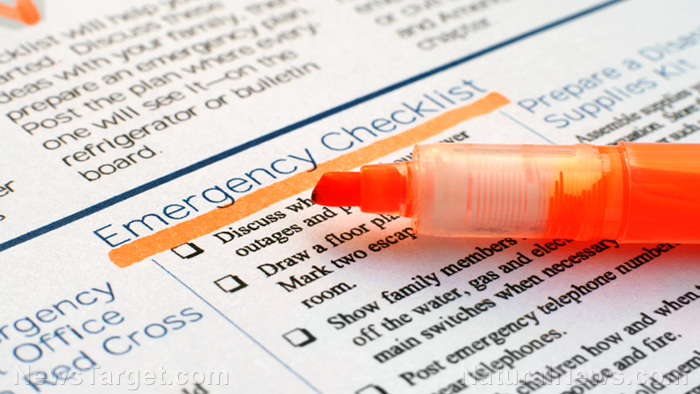
Due to the actions of some authoritarian regimes, the risk of an attack by a nuclear-capable nation may soon include the detonation of a thermonuclear bomb.
Before SHTF, stock up on essential medical supplies such as personal protective gear and supplies for treating burns and trauma wounds. (h/t to DoomAndBloom.net)
If you are too close to a nuclear explosion, like at the epicenter of a blast (“ground zero”), the worst medical issue you will face is death.
But if you are lucky enough to be located elsewhere after a nuclear explosion, you have a greater chance of surviving, or at least escaping with minor injuries.
Surviving a nuclear attack
While the atomic bomb dropped on Hiroshima in 1945 killed 150,000 people, another 250,000 in the area survived long-term.
The damage caused by a nuclear bomb is related to its “yield” or the amount of energy produced in multiples of a thousand tons of TNT (a kiloton).
To illustrate, the Hiroshima atomic bomb of 1945 had a yield of 15 kilotons.
Sixteen years later, the Soviet Union developed and detonated a 51,000-kiloton weapon.
But most modern warheads are in the 100- to 500-kiloton range. This is because they are designed to be fired at a target in clusters that are harder to intercept than one missile.
Damage caused by nuclear weapons
The U.S. government estimates the distribution of damage from a nuclear bomb to be:
- 50 percent shockwave (kinetic energy)
- 35 percent heat (thermal energy)
- 5 percent initial blast radiation
- 10 percent dispersed radiation (fallout)
We are building the infrastructure of human freedom and empowering people to be informed, healthy and aware. Explore our decentralized, peer-to-peer, uncensorable Brighteon.io free speech platform here. Learn about our free, downloadable generative AI tools at Brighteon.AI. Every purchase at HealthRangerStore.com helps fund our efforts to build and share more tools for empowering humanity with knowledge and abundance.
The damage pattern of a nuclear detonation is usually circular, but prevailing winds may change it to a “keyhole” shape.
Nuclear attacks produce two types of kinetic energy: “overpressure” effects measured in pounds per square inch (psi) over environmental norms and wind effects measured in miles per hour.
Overpressure can cause eardrum rupture at a threshold of five psi and severe lung injury at 20 to 30 psi.
Blast winds can reach hundreds of miles per hour, which can result in the collapse of buildings and the creation of flying debris that can cause injuries to anyone in the area.
But with a 10-kiloton blast, it’s unlikely that anyone within a half-mile of ground zero can survive. (Related: Survival 101: Preparing for a nuclear emergency.)
Thermal damage is another significant aspect of nuclear detonation. If you are outdoors during a nuclear attack, you will suffer fatal third-degree burns within a mile radius of ground zero.
Thermal effects can also cause large fires that would be difficult to control.
Radiation damage occurs from the initial blast and long-term exposure. With ground detonations, millions of tons of earth are vaporized and rise with the fireball or the “mushroom cloud.”
Next, the radioactive debris falls back to earth as “fallout.” In a 10-kiloton explosion, an area that is at least 10 miles downwind would experience enough fallout that can harm your health or cause death.
The risk is worse in the first few hours of an attack.
If you are further downwind but have not taken shelter, you may experience acute radiation sickness (ARS). ARS causes symptoms like burns, bone marrow suppression, hair loss, intestinal damage and a weakened immune system. Eventually, rates of cancers and cataracts will exceed that of non-affected populations.
Damage to the medical infrastructure
If the attack occurred in the center of a city, hundreds of thousands of survivors would require medical care.
But surviving hospital units would only be able to handle a tiny fraction of the burn, trauma and radiation cases in the aftermath of an attack.
The lack of medical personnel will also be an issue after SHTF. For example, 87 percent of physicians live in urban areas, where there will be many casualties.
It is believed that each surviving doctor would have to treat at least 600 to 700 patients.
This is why you must start stocking up on medical supplies now so you can handle medical emergencies after a nuclear attack.
Supplies to stock up on before SHTF
If you are tasked with being the family medic during an emergency, you must have the right supplies for various medical emergencies.
You will need trauma supplies to treat high-impact injuries like broken bones, crush injuries and hemorrhage.
To treat burns, you will need clean dressings to cover injured areas of skin and prevent infection. If the victim has been exposed to radiation, you’ll need tools that can help you determine the level of exposure and the chance for survival.
Below are the lists of different supplies you may want to stock up on:
Additional medications:
- Acetaminophen (generic Tylenol)
- Antifungal cream
- Aspirin
- Bismuth subsalicylate (Pepto-Bismol)
- Diphenhydramine (generic Benadryl)
- Hydrocortisone cream
- Ibuprofen (generic Advil)
- Laxatives
- Loperamide (generic Imodium)
- Nasal decongestant (phenylephrine HCl 10mg)
- Potassium iodide tablets (for radioactive iodine)
- Prussian blue (for radioactive cesium)
Miscellaneous equipment:
- Bandage scissors or EMT shears
- Blood pressure cuff and stethoscope kit
- Curved and straight clamps
- Headlamps and penlights
- Iris or nail scissors
- Magnifying glass
- Needle holders
- Pulse oximeters and extra batteries
- Reflex hammer
- Scalpels (sterile)
- Solar/Mylar blankets
- Thermometer
- Tweezers
Orthopedic supplies
- Ace Wrap elastic bandage with clips
- Casting materials
- Cervical collars
- Instant and reusable hot/cold packs
- Malleable padded splints (assorted sizes)
- Moleskin sheets
- Pain reliever ointment or creams
- Triangular bandages with safety pins
Personal protection gear
- Bag valve masks
- CPR protective masks
- Sterile and non-sterile gloves
- Surgical face masks 3-ply, blue
Supplies for eye issues:
- Eye cups
- Eye pads (sterile)
- Eye patches
- Eyewash
- Plastic eye shields
Trauma supplies
- Chest decompression needles
- Compression dressings (various sizes)
- Dressings and bandages (various sizes, sterile and non-sterile)
- Duct tape
- Gauze rolls (sterile and non-sterile)
- Hemostatic dressings
- Medical tapes
- Non-stick burn dressings
- Oral and nasal airways (various sizes)
- Self-adherent wraps (Coban)
- Sterile cotton-tipped applicators
- Tourniquets
- Vented chest seals
Water/rehydration supplies:
- Water filters
- Water purification tablets
- Rehydration salt packets
Wound care supplies
- Adhesive bandages (assorted sizes)
- Alcohol, BZK, chlorhexidine antiseptics and iodine
- Bacitracin antibiotic ointment
- Burn gel
- Dakin’s solution
- Hand sanitizers and soap
- Hydrogen peroxide
- Petroleum jelly
- Steri-Strips or butterfly bandages
- Sterile cotton-tipped applicators
- Suture and stapler Kits
- Tincture of Benzoin, swabs, or wipes (to secure Steri-trips)
- Waterproof pads (Chux)
- Wound irrigation syringes (12cc and 60cc sizes)
After a nuclear attack, you must wear a radiation dosimeter to rule out excessive radiation exposure.
Note that a dosimeter is different from a Geiger counter. The latter is used for detecting the presence of ionizing radiation while a dosimeter identifies the radiation “dose” received by an exposed individual.
Some of these supplies require training to use, so learn how to use them properly before SHTF.
Tips for preventing injuries during nuclear war
Surviving a nuclear war requires careful planning to prevent injuries and sickness. Your survival depends on three important factors: time, distance and level of available protection.
Time
Radiation damage depends on the length of exposure, so limit the time you spend outdoors. Evacuate from areas where high levels of radiation are detected and there are no adequate shelters nearby.
The activity of radioactive particles decreases over time, so within 24 hours levels should drop to 1/10 of their previous value or less.
If you are driving at the time of detonation, you will be exposed to significant radiation. Cars don’t provide a significant protective barrier, so try to drive to a large concrete building or underground structure nearby for added protection.
Distance
Do whatever you can to increase the distance from ground zero. Living in the center of a large city means you are in a dangerous spot with a great risk for severe trauma due to blast effects.
Once you survive the initial explosion, you will likely be one of many that require medical care. But any medical facilities that remain would be overwhelmed or, in some cases, non-existent.
The pattern of fallout spread is a keyhole that may vary depending on prevailing winds. Since radiation disperses over distance, the effects will be decreased in proportion.
Protection
To increase your chance of survival, make sure you have a functioning shield.
If your shelter is far from the immediate vicinity of the blast, it can help reduce the risk of injuries and radiation sickness.
Shielding will decrease exposure exponentially, so you should learn how to construct a barrier between your family and the radioactive source. Use denser materials for better protection.
Shielding effectiveness is measured in terms of “halving thickness,” or the thickness of a particular material that will reduce gamma radiation by one-half. Multiplying the halving thickness helps multiply your protection.
Here are the halving thicknesses of common building materials:
- Lead – 0.4 inches (one centimeter)
- Steel – 1 inch (2.5 centimeters)
- Concrete – 2.4 inches (six centimeters)
- Packed soil – 3.6 inches (nine centimeters)
- Water – 7.2 inches (18 centimeters)
- Wood – 11 inches (28 centimeters)
If you’re using lead, the thickness of a lead bunker would only have to be four inches (10 cm) thick. If you’re using wood, you would need a barrier that is at least 110 inches thick (2.8 meters).
Decontamination
If you’re outdoors during a nuclear event and unable to get to shelter immediately, you may inhale radioactive particles from the fallout.
Cover your face with a mask or other barrier like a bandana or scarf to help reduce exposure to radioactive material. A mask can also help when decontaminating children and pets.
Once you are indoors, thoroughly and quickly remove fallout from your body. Simply taking off and discarding outer layers of clothing can eliminate at least 90 percent of radioactive material.
Store any contaminated clothes and shoes in a plastic bag or sealed container.
Next, take a warm shower if you can. Use soap to gently wash your skin, but don’t scald it with very hot water.
Your skin protects your internal organs, and a minor injury can worsen contamination. If you have open wounds, cover them with waterproof bandages while washing.
You can use shampoo, but avoid conditioner because it can cause radioactive material to stick to your hair.
If you can’t take a shower, you should try to wash your hands, face and other exposed parts with soap and water. If you don’t have access to water and soap, use cleansing wipes.
Next, gently blow your nose and wipe your eyes to remove particles in your nasal cavity, eyelashes and eyelids.
Be vigilant. The risk of nuclear war from some rogue power isn’t completely zero. Before SHTF, stock up on medical supplies so you are medically prepared.
Watch the video below to find out why nuclear war is now closer to reality.
This video is from the Mindy channel on Brighteon.com.
More related stories:
Chinese spy balloon that flew over Montana could be used to carry EMP or nuclear weapons.
Prepare before SHTF by learning how to manage first aid emergencies in austere environments.
Even regular people are now constructing bunkers due to fears of a nuclear war.
Sources include:
Submit a correction >>
Tagged Under:
chaos, Collapse, disaster, emergency medicine, emergency supplies, first aid, first-aid kit, Gear, medical supplies, nuclear survival, nuclear war, panic, preparedness, prepper, prepping, prepping tips, radiation, SHTF, survival, survival gear, survival medicine, Survival Tips
This article may contain statements that reflect the opinion of the author
RECENT NEWS & ARTICLES
COPYRIGHT © 2017 COLLAPSE.NEWS
All content posted on this site is protected under Free Speech. Collapse.news is not responsible for content written by contributing authors. The information on this site is provided for educational and entertainment purposes only. It is not intended as a substitute for professional advice of any kind. Collapse.news assumes no responsibility for the use or misuse of this material. All trademarks, registered trademarks and service marks mentioned on this site are the property of their respective owners.






